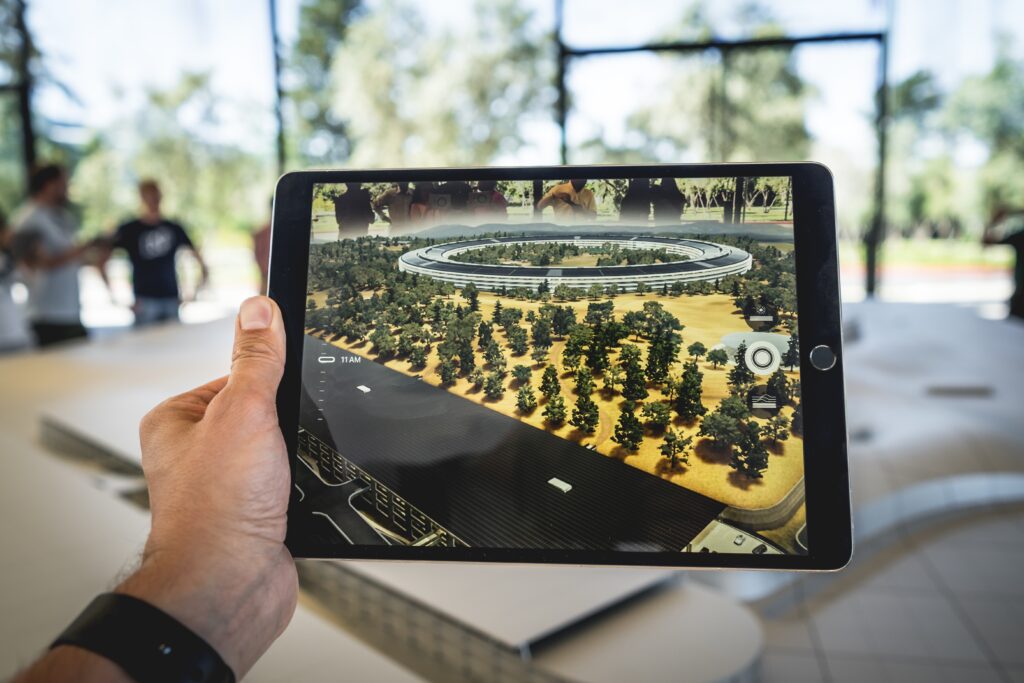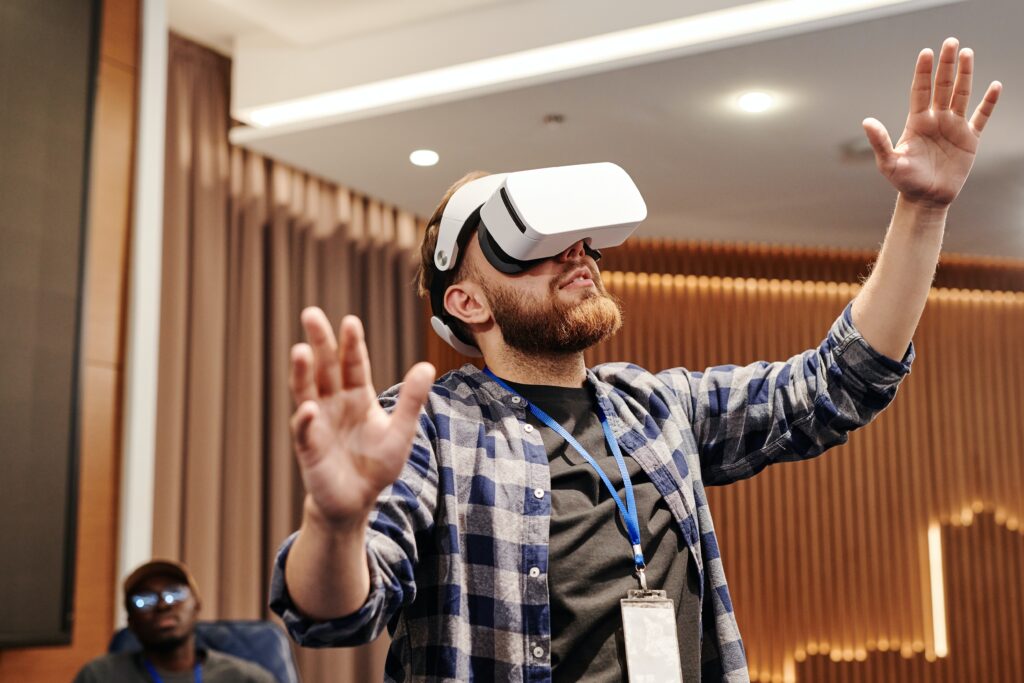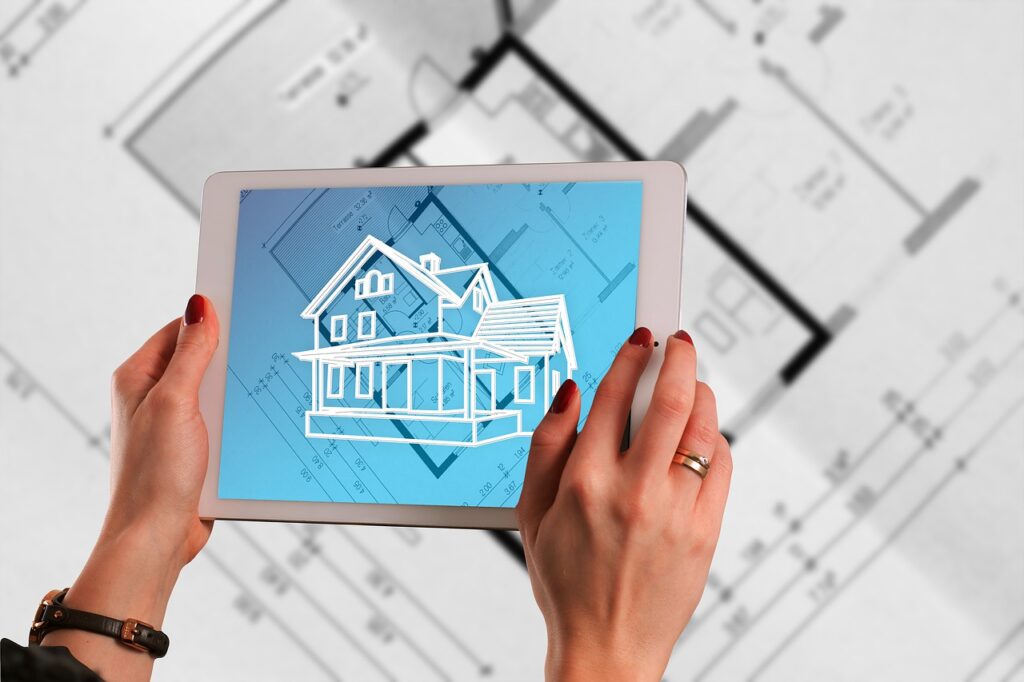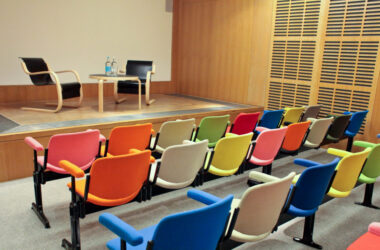How is Augmented Reality Transforming Events?

Augmented Reality (AR) is a technology that blends digital information, such as graphics, audio, and other sensory enhancements, with the real-world environment to create an augmented or enhanced view of reality. In simpler terms, AR overlays virtual elements onto the physical world, allowing users to experience a combination of the real and virtual worlds simultaneously.
AR is typically experienced through various devices, including smartphones, tablets, smart glasses, and AR headsets. These devices use cameras and sensors to perceive the physical environment, and then AR software processes this data to add digital content onto the user’s view.
There are different types of AR experiences:
Marker-based AR:
This type of AR relies on predefined markers or images in the real world. When the device’s camera detects these markers, it triggers the display of associated digital content.
Markerless AR:
Also known as location-based AR, it does not require markers. Instead, it uses GPS, accelerometers, and other sensors to determine the user’s position and orientation in the physical space, allowing digital content to be overlaid accordingly.
Projection-based AR:
This approach projects digital content directly onto physical objects or surfaces, enhancing them with additional information or visual effects.
Superimposition-based AR:
In this method, virtual objects are superimposed onto the real-world view, allowing users to interact with them in real-time.
AR has a wide range of applications across various industries, including entertainment, gaming, education, healthcare, marketing, architecture, and more. It has the potential to enhance user experiences, provide additional context and information, and create interactive and immersive environments. As AR technology continues to advance, it is likely to become even more prevalent in our daily lives, transforming the way we interact with the world around us.

When used at events, AR revolutionises the attendee experience, event planning, and marketing. Here are some of the ways AR is impacting events:
Enhanced Attendee Experience:
AR brings an element of interactivity and immersion to events. Attendees can use AR-enabled devices like smartphones or smart glasses to access additional information, visuals, or interactive content related to the event. This enhances engagement and makes the event more memorable.
Interactive Exhibits and Installations:
AR allows event organisers to create interactive exhibits and installations. Attendees can point their devices at certain objects or markers to trigger digital content, animations, or 3D models. This level of interactivity increases engagement and makes the event more enjoyable for participants.
Virtual Try-Ons and Product Demonstrations:
For events focused on showcasing products or services, AR can offer virtual try-ons or product demonstrations. Attendees can use AR to visualize how a product would look in real life or how it works in different scenarios.
Personalized Event Experience:
AR can provide personalized experiences based on attendees’ preferences and interests. For example, using AR apps, attendees can create their custom schedules, receive relevant notifications, and access content tailored to their needs.

Real-Time Information and Navigation:
AR can help attendees navigate large event venues more efficiently. With AR overlays, attendees can view real-time information about session schedules, booth locations, and event updates, improving the overall event experience.
Remote Participation and Inclusivity:
AR enables remote participation in events, allowing individuals who cannot attend physically to join virtually. This fosters inclusivity and expands the event’s reach to a global audience.
Branding and Marketing Opportunities:
Brands can leverage AR to create unique and interactive marketing experiences at events. AR-powered campaigns can leave a lasting impression on attendees and drive brand awareness.

Data Collection and Analytics:
AR can be used to collect valuable data and insights about attendee behavior and interactions. Event organisers can analyse this data to improve future events and enhance engagement strategies.
Training and Education:
AR can facilitate training sessions and workshops at events. Attendees can engage in hands-on experiences or simulations using AR technology, making learning more effective and memorable.
Social Sharing and User-Generated Content:
AR experiences at events are highly shareable on social media platforms. Attendees are more likely to capture and share their AR interactions, creating user-generated content that promotes the event and engages a broader audience.
Overall, AR is transforming events by providing new and innovative ways to engage attendees, deliver content, and enhance the overall event experience. As AR technology continues to evolve, it will likely play an even more prominent role in shaping the future of events.
Related Posts

A Corporate Christmas Party with a Difference
Do you dread the company’s Christmas party invitation arriving on your desk? Tired of soggy sausage rolls, lukewarm turkey, and limp vegetables, coupled with making small talk over a glass…

Electric Flamingo Christmas Party
In the dark days of winter, London becomes a canvas of sparkling lights, festive decorations, and joyous celebrations. Among the myriad of events, the Electric Flamingo Christmas Party at The…

Le Sorelle Barge in London
Discover an unparalleled blend of historical charm, luxury, and modern comfort aboard Le Sorelle, an extraordinary 1950s barge conversion nestled in the heart of Canary Wharf. Crafted with reclaimed wood…

Finding the Perfect Gallery Venue in London
Finding the perfect gallery venue for an event offers an inspiring environment that can greatly enhance the creative experience. These spaces are specifically designed to showcase artistic work, providing optimal…
